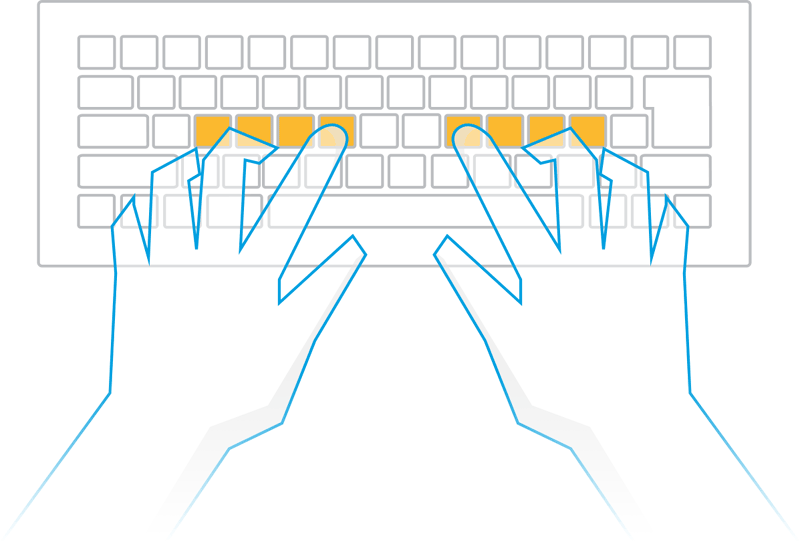
BEHAVIORAL BIOMETRICS: KEYSTROKE DYNAMICS
The way in which a user types on a keyboard or a touchscreen keypad provides a unique and identifiable behavioral biometrics trait. Ziphio coconut platform incorporates a keystroke dynamics algorithm that analyzes the unique patterns and rhythm of each person’s typing habits. While an attacker may know the content to be typed, they will not be able to reproduce the correct keystroke rhythm.
How do keystroke dynamics work?
Similar to voice biometrics, the user can either be asked to type the same phrase for each authentication (text-dependent) or to type new content each time (text-independent). Best results will be achieved when the user is asked to type the same phrase – such as an email address or a username – using the same keyboard; typing rhythm is affected by the size and layout of a keyboard or smartphone..
While keystroke user authentication is less accurate than physiological biometric traits (e.g. finger, face or eye), it does support risk-based, adaptive authentication and continuous authentication. With minimum user interaction, keystroke dynamics can be used to assess whether further user authentication is required, which in turn can reduce the number of times a customer is explicitly asked to authenticate.
On a smartphone, information from the gyroscope, accelerometer and touchscreen pressure sensors is used in conjunction with keystroke dynamics to increase accuracy. Monitoring smartphone sensors and typing can be used as part of a continuous user authentication process that builds up confidence over time that the correct user is present.
Behavioral biometrics technology offers robust, risk appropriate user authentication and anti-fraud measures that are effortless for users and which require no special hardware or additional security steps.
The benefits of behavioral biometrics includes:
- Flexibility: A huge selection of behavioral biometric features are available for analysis. Selected features can be easily tailored to specific needs
- Efficiency: For user authentication, behavioral biometrics are applied in real-time. For fraud detection, biometric behavioral analysis substantially reduces the time needed to identify fraud versus legitimate user behavior.
- User Experience: Without disrupting the user experience, behavioral biometrics analyzes the characteristic behaviors of a device user.
- Security: Behavioral biometrics are practically impossible to replicate, particularly when multiple behavioral features are examined concurrently (e.g. behavioral biometrics with finger, face or eye).